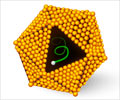University of California-Los Angeles (UCLA), scientists have shown that mice can be made to burn more fat by inserting a molecular shunt into their livers.
University of California-Los Angeles (UCLA), scientists have shown that mice can be made to burn more fat by inserting a molecular shunt into their livers.
The researchers have revealed that the so-called glycoxylate shunt consists of two metabolic enzymes normally found in bacteria and plants, but not in mammals."It's an additional channel for burning fat to control obesity," said lead researcher James Liao.
"This creates a shortcut through (the normal pathway). It's like putting in a toll road," adds Katrina Dipple, also of UCLA.
The researchers said that before starting the study, they just did not know what to the enzymes taken from E. coli bacteria would do when placed in mammalian cells.
"There was no guarantee it would work. But we were brave enough to try," Liao said.
However, the research team found human liver cells expressing the enzymes burn more fat, and mice with the shunt resisting becoming obese despite eating a high-fat diet.
Advertisement
"By perturbing the system, we were able to find how it's controlled," Dipple said.
Advertisement
They say that their study does offer proof-of-principle for a new way to study metabolism.
"Usually, we study metabolism by knocking out a gene or replenishing one that is missing. In this case, we introduced a new pathway to see the response," Liao said.
A research article on the study has been published in the journal Cell Metabolism.
Source-ANI
ARU














